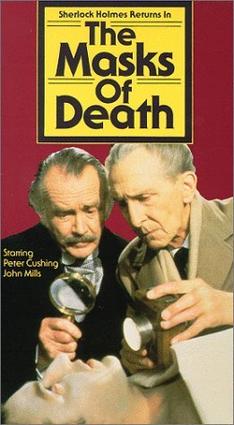| The Masks of Death | |
|---|---|
 | |
| Genre | Crime Horror Thriller |
| Written by | Anthony Hinds N.J. Crisp |
| Story by | John Elder |
| Directed by | Roy Ward Baker |
| Starring | Peter Cushing John Mills Anne Baxter Ray Milland Anton Diffring Gordon Jackson Susan Penhaligon |
| Music by | Malcolm Williamson |
| Production | |
| Executive producer | Kevin Francis |
| Producer | Norman Priggen |
| Cinematography | Brendan J. Stafford, BSC |
| Editor | Chris Barnes |
| Running time | 78 minutes |
| Production company | Tyburn Film Productions |
| Original release | |
| Release | 23 December 1984 |
The Masks of Death is a 1984 British mystery television film directed by Roy Ward Baker and starring Peter Cushing as Sherlock Holmes and John Mills as Doctor Watson.